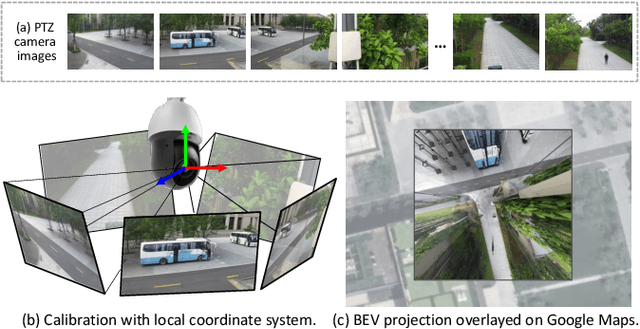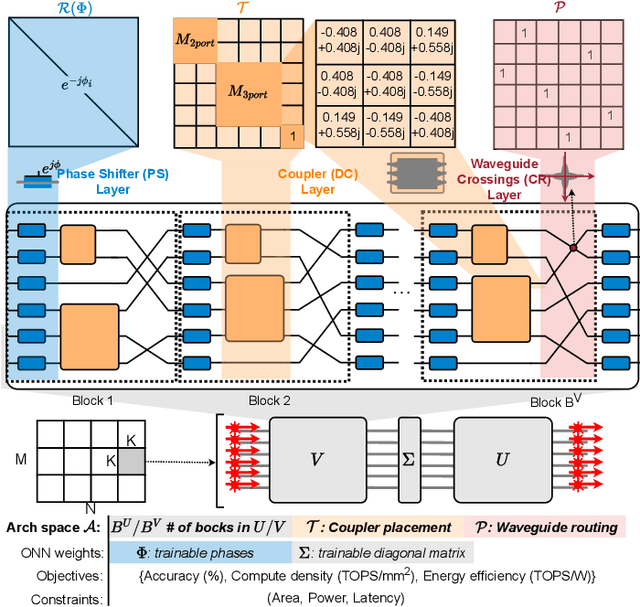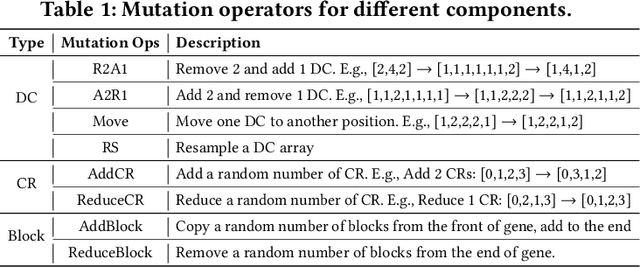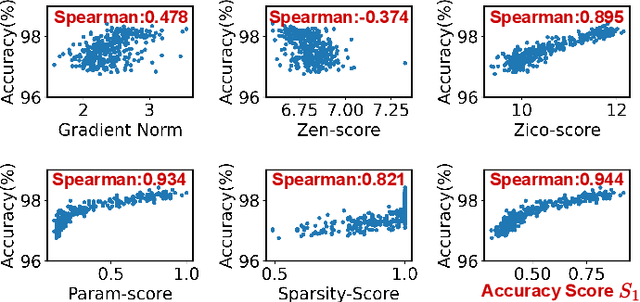Jiaqi Gu
Toward Lifelong-Sustainable Electronic-Photonic AI Systems via Extreme Efficiency, Reconfigurability, and Robustness
Sep 09, 2025Abstract:The relentless growth of large-scale artificial intelligence (AI) has created unprecedented demand for computational power, straining the energy, bandwidth, and scaling limits of conventional electronic platforms. Electronic-photonic integrated circuits (EPICs) have emerged as a compelling platform for next-generation AI systems, offering inherent advantages in ultra-high bandwidth, low latency, and energy efficiency for computing and interconnection. Beyond performance, EPICs also hold unique promises for sustainability. Fabricated in relaxed process nodes with fewer metal layers and lower defect densities, photonic devices naturally reduce embodied carbon footprint (CFP) compared to advanced digital electronic integrated circuits, while delivering orders-of-magnitude higher computing performance and interconnect bandwidth. To further advance the sustainability of photonic AI systems, we explore how electronic-photonic design automation (EPDA) and cross-layer co-design methodologies can amplify these inherent benefits. We present how advanced EPDA tools enable more compact layout generation, reducing both chip area and metal layer usage. We will also demonstrate how cross-layer device-circuit-architecture co-design unlocks new sustainability gains for photonic hardware: ultra-compact photonic circuit designs that minimize chip area cost, reconfigurable hardware topology that adapts to evolving AI workloads, and intelligent resilience mechanisms that prolong lifetime by tolerating variations and faults. By uniting intrinsic photonic efficiency with EPDA- and co-design-driven gains in area efficiency, reconfigurability, and robustness, we outline a vision for lifelong-sustainable electronic-photonic AI systems. This perspective highlights how EPIC AI systems can simultaneously meet the performance demands of modern AI and the urgent imperative for sustainable computing.
SparseC-AFM: a deep learning method for fast and accurate characterization of MoS$_2$ with C-AFM
Jul 17, 2025Abstract:The increasing use of two-dimensional (2D) materials in nanoelectronics demands robust metrology techniques for electrical characterization, especially for large-scale production. While atomic force microscopy (AFM) techniques like conductive AFM (C-AFM) offer high accuracy, they suffer from slow data acquisition speeds due to the raster scanning process. To address this, we introduce SparseC-AFM, a deep learning model that rapidly and accurately reconstructs conductivity maps of 2D materials like MoS$_2$ from sparse C-AFM scans. Our approach is robust across various scanning modes, substrates, and experimental conditions. We report a comparison between (a) classic flow implementation, where a high pixel density C-AFM image (e.g., 15 minutes to collect) is manually parsed to extract relevant material parameters, and (b) our SparseC-AFM method, which achieves the same operation using data that requires substantially less acquisition time (e.g., under 5 minutes). SparseC-AFM enables efficient extraction of critical material parameters in MoS$_2$, including film coverage, defect density, and identification of crystalline island boundaries, edges, and cracks. We achieve over 11x reduction in acquisition time compared to manual extraction from a full-resolution C-AFM image. Moreover, we demonstrate that our model-predicted samples exhibit remarkably similar electrical properties to full-resolution data gathered using classic-flow scanning. This work represents a significant step toward translating AI-assisted 2D material characterization from laboratory research to industrial fabrication. Code and model weights are available at github.com/UNITES-Lab/sparse-cafm.
SP2RINT: Spatially-Decoupled Physics-Inspired Progressive Inverse Optimization for Scalable, PDE-Constrained Meta-Optical Neural Network Training
May 23, 2025Abstract:DONNs harness the physics of light propagation for efficient analog computation, with applications in AI and signal processing. Advances in nanophotonic fabrication and metasurface-based wavefront engineering have opened new pathways to realize high-capacity DONNs across various spectral regimes. Training such DONN systems to determine the metasurface structures remains challenging. Heuristic methods are fast but oversimplify metasurfaces modulation, often resulting in physically unrealizable designs and significant performance degradation. Simulation-in-the-loop training methods directly optimize a physically implementable metasurface using adjoint methods during end-to-end DONN training, but are inherently computationally prohibitive and unscalable.To address these limitations, we propose SP2RINT, a spatially decoupled, progressive training framework that formulates DONN training as a PDE-constrained learning problem. Metasurface responses are first relaxed into freely trainable transfer matrices with a banded structure. We then progressively enforce physical constraints by alternating between transfer matrix training and adjoint-based inverse design, avoiding per-iteration PDE solves while ensuring final physical realizability. To further reduce runtime, we introduce a physics-inspired, spatially decoupled inverse design strategy based on the natural locality of field interactions. This approach partitions the metasurface into independently solvable patches, enabling scalable and parallel inverse design with system-level calibration. Evaluated across diverse DONN training tasks, SP2RINT achieves digital-comparable accuracy while being 1825 times faster than simulation-in-the-loop approaches. By bridging the gap between abstract DONN models and implementable photonic hardware, SP2RINT enables scalable, high-performance training of physically realizable meta-optical neural systems.
MAPS: Multi-Fidelity AI-Augmented Photonic Simulation and Inverse Design Infrastructure
Mar 02, 2025



Abstract:Inverse design has emerged as a transformative approach for photonic device optimization, enabling the exploration of high-dimensional, non-intuitive design spaces to create ultra-compact devices and advance photonic integrated circuits (PICs) in computing and interconnects. However, practical challenges, such as suboptimal device performance, limited manufacturability, high sensitivity to variations, computational inefficiency, and lack of interpretability, have hindered its adoption in commercial hardware. Recent advancements in AI-assisted photonic simulation and design offer transformative potential, accelerating simulations and design generation by orders of magnitude over traditional numerical methods. Despite these breakthroughs, the lack of an open-source, standardized infrastructure and evaluation benchmark limits accessibility and cross-disciplinary collaboration. To address this, we introduce MAPS, a multi-fidelity AI-augmented photonic simulation and inverse design infrastructure designed to bridge this gap. MAPS features three synergistic components: (1) MAPS-Data: A dataset acquisition framework for generating multi-fidelity, richly labeled devices, providing high-quality data for AI-for-optics research. (2) MAPS-Train: A flexible AI-for-photonics training framework offering a hierarchical data loading pipeline, customizable model construction, support for data- and physics-driven losses, and comprehensive evaluations. (3) MAPS-InvDes: An advanced adjoint inverse design toolkit that abstracts complex physics but exposes flexible optimization steps, integrates pre-trained AI models, and incorporates fabrication variation models. This infrastructure MAPS provides a unified, open-source platform for developing, benchmarking, and advancing AI-assisted photonic design workflows, accelerating innovation in photonic hardware optimization and scientific machine learning.
PTZ-Calib: Robust Pan-Tilt-Zoom Camera Calibration
Feb 13, 2025



Abstract:In this paper, we present PTZ-Calib, a robust two-stage PTZ camera calibration method, that efficiently and accurately estimates camera parameters for arbitrary viewpoints. Our method includes an offline and an online stage. In the offline stage, we first uniformly select a set of reference images that sufficiently overlap to encompass a complete 360{\deg} view. We then utilize the novel PTZ-IBA (PTZ Incremental Bundle Adjustment) algorithm to automatically calibrate the cameras within a local coordinate system. Additionally, for practical application, we can further optimize camera parameters and align them with the geographic coordinate system using extra global reference 3D information. In the online stage, we formulate the calibration of any new viewpoints as a relocalization problem. Our approach balances the accuracy and computational efficiency to meet real-world demands. Extensive evaluations demonstrate our robustness and superior performance over state-of-the-art methods on various real and synthetic datasets. Datasets and source code can be accessed online at https://github.com/gjgjh/PTZ-Calib
HybridGS: Decoupling Transients and Statics with 2D and 3D Gaussian Splatting
Dec 05, 2024



Abstract:Generating high-quality novel view renderings of 3D Gaussian Splatting (3DGS) in scenes featuring transient objects is challenging. We propose a novel hybrid representation, termed as HybridGS, using 2D Gaussians for transient objects per image and maintaining traditional 3D Gaussians for the whole static scenes. Note that, the 3DGS itself is better suited for modeling static scenes that assume multi-view consistency, but the transient objects appear occasionally and do not adhere to the assumption, thus we model them as planar objects from a single view, represented with 2D Gaussians. Our novel representation decomposes the scene from the perspective of fundamental viewpoint consistency, making it more reasonable. Additionally, we present a novel multi-view regulated supervision method for 3DGS that leverages information from co-visible regions, further enhancing the distinctions between the transients and statics. Then, we propose a straightforward yet effective multi-stage training strategy to ensure robust training and high-quality view synthesis across various settings. Experiments on benchmark datasets show our state-of-the-art performance of novel view synthesis in both indoor and outdoor scenes, even in the presence of distracting elements.
SimPhony: A Device-Circuit-Architecture Cross-Layer Modeling and Simulation Framework for Heterogeneous Electronic-Photonic AI System
Nov 20, 2024



Abstract:Electronic-photonic integrated circuits (EPICs) offer transformative potential for next-generation high-performance AI but require interdisciplinary advances across devices, circuits, architecture, and design automation. The complexity of hybrid systems makes it challenging even for domain experts to understand distinct behaviors and interactions across design stack. The lack of a flexible, accurate, fast, and easy-to-use EPIC AI system simulation framework significantly limits the exploration of hardware innovations and system evaluations on common benchmarks. To address this gap, we propose SimPhony, a cross-layer modeling and simulation framework for heterogeneous electronic-photonic AI systems. SimPhony offers a platform that enables (1) generic, extensible hardware topology representation that supports heterogeneous multi-core architectures with diverse photonic tensor core designs; (2) optics-specific dataflow modeling with unique multi-dimensional parallelism and reuse beyond spatial/temporal dimensions; (3) data-aware energy modeling with realistic device responses, layout-aware area estimation, link budget analysis, and bandwidth-adaptive memory modeling; and (4) seamless integration with model training framework for hardware/software co-simulation. By providing a unified, versatile, and high-fidelity simulation platform, SimPhony enables researchers to innovate and evaluate EPIC AI hardware across multiple domains, facilitating the next leap in emerging AI hardware. We open-source our codes at https://github.com/ScopeX-ASU/SimPhony
Multi-Dimensional Reconfigurable, Physically Composable Hybrid Diffractive Optical Neural Network
Nov 08, 2024



Abstract:Diffractive optical neural networks (DONNs), leveraging free-space light wave propagation for ultra-parallel, high-efficiency computing, have emerged as promising artificial intelligence (AI) accelerators. However, their inherent lack of reconfigurability due to fixed optical structures post-fabrication hinders practical deployment in the face of dynamic AI workloads and evolving applications. To overcome this challenge, we introduce, for the first time, a multi-dimensional reconfigurable hybrid diffractive ONN system (MDR-HDONN), a physically composable architecture that unlocks a new degree of freedom and unprecedented versatility in DONNs. By leveraging full-system learnability, MDR-HDONN repurposes fixed fabricated optical hardware, achieving exponentially expanded functionality and superior task adaptability through the differentiable learning of system variables. Furthermore, MDR-HDONN adopts a hybrid optical/photonic design, combining the reconfigurability of integrated photonics with the ultra-parallelism of free-space diffractive systems. Extensive evaluations demonstrate that MDR-HDONN has digital-comparable accuracy on various task adaptations with 74x faster speed and 194x lower energy. Compared to prior DONNs, MDR-HDONN shows exponentially larger functional space with 5x faster training speed, paving the way for a new paradigm of versatile, composable, hybrid optical/photonic AI computing. We will open-source our codes.
PACE: Pacing Operator Learning to Accurate Optical Field Simulation for Complicated Photonic Devices
Nov 05, 2024



Abstract:Electromagnetic field simulation is central to designing, optimizing, and validating photonic devices and circuits. However, costly computation associated with numerical simulation poses a significant bottleneck, hindering scalability and turnaround time in the photonic circuit design process. Neural operators offer a promising alternative, but existing SOTA approaches, NeurOLight, struggle with predicting high-fidelity fields for real-world complicated photonic devices, with the best reported 0.38 normalized mean absolute error in NeurOLight. The inter-plays of highly complex light-matter interaction, e.g., scattering and resonance, sensitivity to local structure details, non-uniform learning complexity for full-domain simulation, and rich frequency information, contribute to the failure of existing neural PDE solvers. In this work, we boost the prediction fidelity to an unprecedented level for simulating complex photonic devices with a novel operator design driven by the above challenges. We propose a novel cross-axis factorized PACE operator with a strong long-distance modeling capacity to connect the full-domain complex field pattern with local device structures. Inspired by human learning, we further divide and conquer the simulation task for extremely hard cases into two progressively easy tasks, with a first-stage model learning an initial solution refined by a second model. On various complicated photonic device benchmarks, we demonstrate one sole PACE model is capable of achieving 73% lower error with 50% fewer parameters compared with various recent ML for PDE solvers. The two-stage setup further advances high-fidelity simulation for even more intricate cases. In terms of runtime, PACE demonstrates 154-577x and 11.8-12x simulation speedup over numerical solver using scipy or highly-optimized pardiso solver, respectively. We open sourced the code and dataset.
ADEPT-Z: Zero-Shot Automated Circuit Topology Search for Pareto-Optimal Photonic Tensor Cores
Oct 02, 2024



Abstract:Photonic tensor cores (PTCs) are essential building blocks for optical artificial intelligence (AI) accelerators based on programmable photonic integrated circuits. Most PTC designs today are manually constructed, with low design efficiency and unsatisfying solution quality. This makes it challenging to meet various hardware specifications and keep up with rapidly evolving AI applications. Prior work has explored gradient-based methods to learn a good PTC structure differentiably. However, it suffers from slow training speed and optimization difficulty when handling multiple non-differentiable objectives and constraints. Therefore, in this work, we propose a more flexible and efficient zero-shot multi-objective evolutionary topology search framework ADEPT-Z that explores Pareto-optimal PTC designs with advanced devices in a larger search space. Multiple objectives can be co-optimized while honoring complicated hardware constraints. With only <3 hours of search, we can obtain tens of diverse Pareto-optimal solutions, 100x faster than the prior gradient-based method, outperforming prior manual designs with 2x higher accuracy weighted area-energy efficiency. The code of ADEPT-Z is available at https://github.com/ScopeX-ASU/ADEPT-Z.
 Add to Chrome
Add to Chrome Add to Firefox
Add to Firefox Add to Edge
Add to Edge